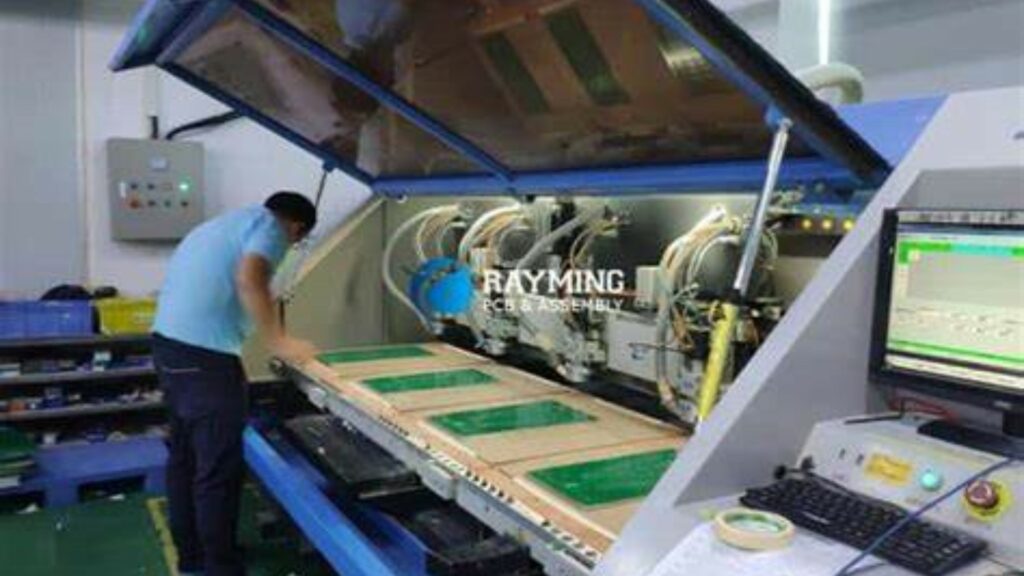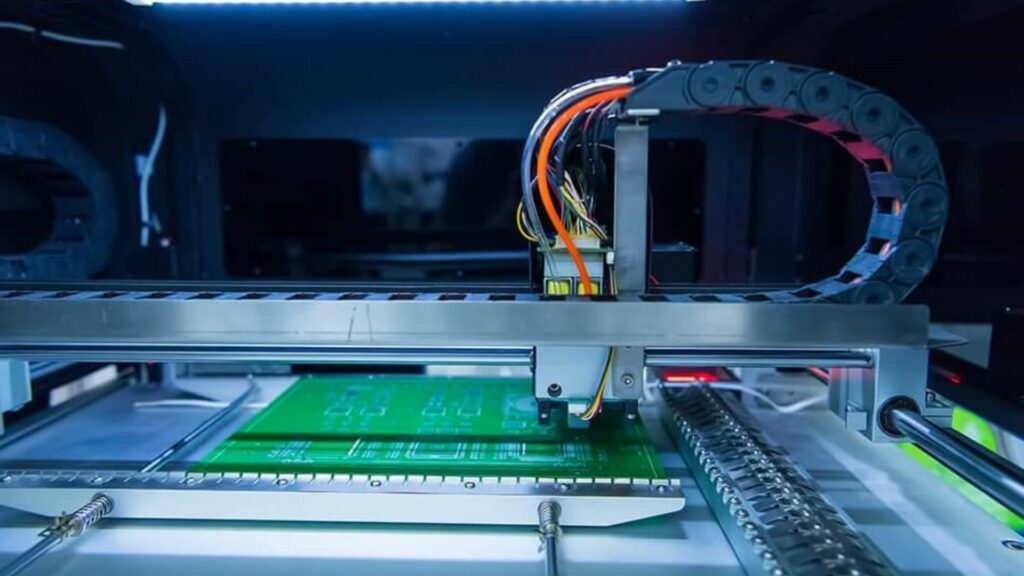Introduction
CNC machining has become an indispensable technology in the modern manufacturing industry, allowing for precise and efficient production of complex parts and components. However, navigating the intricacies of CNC machining can be challenging, especially for those new to the process. In this article, we will reveal five secrets that will make your CNC machining experience with RAYPCB not only easier but also more productive and cost-effective.
Secret #1: Understanding Material Properties
The Importance of Material Selection
Choosing the right material for your CNC machining project is crucial. Different materials have varying properties that can significantly impact the machining process, tool life, and overall quality of the finished product. Factors such as hardness, machinability, and chemical composition play a critical role in determining the appropriate machining parameters and tool selection.
Common Materials Used in CNC Machining
- Metals
- Aluminum
- Stainless Steel
- Brass
- Copper
- Titanium
- Plastics
- ABS
- PVC
- Acrylic
- Nylon
- Polycarbonate
- Woods
- Hardwoods (Oak, Maple, Walnut)
- Softwoods (Pine, Cedar, Redwood)
- Composites
- Carbon Fiber Reinforced Polymers (CFRP)
- Glass Fiber Reinforced Polymers (GFRP)
- Kevlar
Understanding Material Machinability
Machinability is a measure of how easily a material can be cut or machined. Materials with high machinability ratings are generally easier to machine, resulting in better surface finishes, longer tool life, and faster machining times. On the other hand, materials with low machinability ratings may require specialized tooling, slower feed rates, and more frequent tool changes.
By understanding the properties of the materials you are working with, you can optimize your CNC machining process, ensure consistent quality, and extend the lifespan of your cutting tools.

Secret #2: Mastering CAD/CAM Software
The Importance of CAD/CAM Software
Computer-Aided Design (CAD) and Computer-Aided Manufacturing (CAM) software are essential tools in the CNC machining process. These software packages allow you to create digital models of your parts, simulate the machining process, and generate the necessary toolpaths for your CNC machine.
Popular CAD/CAM Software
- Fusion 360
- AutoCAD
- SolidWorks
- Mastercam
- Inventor
- ESPRIT
Key Features of CAD/CAM Software
- 3D modeling and design capabilities
- Simulation and verification tools
- Toolpath generation and optimization
- Post-processing for machine-specific G-code
- CAM programming and editing
Mastering your CAD/CAM software will enable you to create accurate and detailed part models, optimize toolpaths for efficient machining, and ensure seamless communication between your design files and CNC machine.
Secret #3: Proper Tool Selection and Maintenance
Understanding Cutting Tools
Cutting tools are the backbone of any CNC machining operation. Selecting the right tool for the job and maintaining it properly can significantly impact the quality of your finished parts, tool life, and overall machining efficiency.
Common Cutting Tool Types
- End Mills
- Flat End Mills
- Ball End Mills
- Bull Nose End Mills
- Drills
- Twist Drills
- Indexable Drills
- Step Drills
- Milling Cutters
- Face Mills
- Roughing Mills
- Finishing Mills
- Turning Tools
- Indexable Inserts
- Boring Bars
- Parting Tools
Tool Selection Considerations
- Material being machined
- Cutting speeds and feed rates
- Depth of cut
- Surface finish requirements
- Coolant compatibility
Tool Maintenance and Care
Proper tool maintenance is essential for ensuring consistent performance and prolonging tool life. This includes:
- Regular cleaning and inspection
- Proper storage and handling
- Sharpening and reconditioning
- Coolant and lubricant compatibility
By selecting the right cutting tools and maintaining them properly, you can achieve better surface finishes, longer tool life, and more efficient machining operations.
Secret #4: Optimizing Machining Parameters

Understanding Machining Parameters
Machining parameters refer to the various settings and conditions that govern the CNC machining process. These parameters include spindle speed, feed rate, depth of cut, and coolant usage, among others. Optimizing these parameters is crucial for achieving optimal cutting performance, surface finish, and tool life.
Spindle Speed and Feed Rate
Spindle speed and feed rate are two of the most critical machining parameters. Spindle speed refers to the rotational speed of the cutting tool, while feed rate determines the rate at which the tool moves through the workpiece.
- Higher spindle speeds and feed rates can increase productivity but may also lead to increased tool wear and decreased surface quality.
- Lower spindle speeds and feed rates can improve surface finish but may decrease production rates.
Finding the right balance between spindle speed, feed rate, and other machining parameters is essential for achieving the desired results.
Depth of Cut and Stepover
Depth of cut refers to the amount of material removed in a single pass, while stepover determines the overlap between adjacent toolpaths. These parameters directly impact the machining time, tool life, and surface quality.
- Larger depth of cut and stepover values can increase productivity but may also lead to increased tool wear and decreased surface quality.
- Smaller depth of cut and stepover values can improve surface finish but may decrease production rates.
Coolant and Lubrication
Coolant and lubrication play a crucial role in CNC machining by reducing friction, dissipating heat, and flushing away chips and debris. Proper coolant selection and application can significantly impact tool life, surface finish, and overall machining performance.
By optimizing these machining parameters, you can achieve the desired balance between production rates, surface quality, and tool life, while ensuring efficient and cost-effective CNC machining operations.
Secret #5: Implementing Preventive Maintenance
The Importance of Preventive Maintenance
Preventive maintenance is a proactive approach to maintaining your CNC machining equipment in optimal condition. By regularly inspecting, cleaning, and performing routine maintenance tasks, you can minimize downtime, extend the lifespan of your machinery, and ensure consistent performance.
Common Preventive Maintenance Tasks
- Lubrication and greasing
- Coolant system maintenance
- Spindle bearing inspection and replacement
- Axis alignment and calibration
- Power and control system checks
- Cleaning and debris removal
Benefits of Preventive Maintenance
- Reduced unplanned downtime and increased machine availability
- Improved part quality and consistency
- Extended tool life and reduced tool wear
- Increased energy efficiency and cost savings
- Enhanced operator safety and compliance with regulations
By implementing a robust preventive maintenance program, you can minimize the risk of unexpected breakdowns, maintain optimal machining conditions, and ultimately improve the overall efficiency and productivity of your CNC machining operations.
Frequently Asked Questions (FAQ)
- What is CNC machining, and how does it work? CNC machining, or Computer Numerical Control machining, is a manufacturing process that utilizes computer-controlled machines to precisely remove material from a workpiece to create custom parts and components. The CNC machine follows a set of coded instructions, known as G-code, to control the movement of cutting tools and perform various machining operations, such as milling, turning, drilling, and grinding.
- What are the advantages of CNC machining compared to traditional machining methods? CNC machining offers several advantages over traditional machining methods, including:
- Increased precision and accuracy
- Improved repeatability and consistency
- Faster production rates
- Ability to create complex geometries and intricate designs
- Reduced material waste
- Improved safety for operators
- What are the different types of CNC machining processes? The most common types of CNC machining processes include:
- CNC Milling: Used for creating parts by removing material from a solid workpiece using rotating cutting tools.
- CNC Turning: Used for creating cylindrical parts by rotating a workpiece and removing material using cutting tools.
- CNC Drilling: Used for creating holes and cavities in a workpiece by using rotating drill bits.
- CNC Grinding: Used for achieving precise surface finishes and tight tolerances by removing material using abrasive wheels.
- How do I choose the right cutting tools for CNC machining? Choosing the right cutting tools is crucial for achieving optimal machining results. Factors to consider include:
- Material properties (hardness, machinability, etc.)
- Desired surface finish
- Depth of cut and cutting parameters
- Tool coating and geometry
- Coolant compatibility Additionally, consulting with tool manufacturers or experienced machinists can help you select the most appropriate cutting tools for your specific application.
- What is the role of CAD/CAM software in CNC machining? CAD/CAM (Computer-Aided Design and Computer-Aided Manufacturing) software plays a vital role in CNC machining. CAD software is used to create digital models and designs of the parts to be machined, while CAM software is used to generate the toolpaths and G-code instructions for the CNC machine. CAD/CAM software enables efficient programming, simulation, and optimization of the machining process, leading to increased productivity and improved part quality.
By understanding and implementing these five secrets, you can streamline your CNC machining operations with RAYPCB, ensuring precise and efficient production of high-quality parts and components. Remember, continuous learning and adaptation are key to staying ahead in the ever-evolving world of CNC machining.





